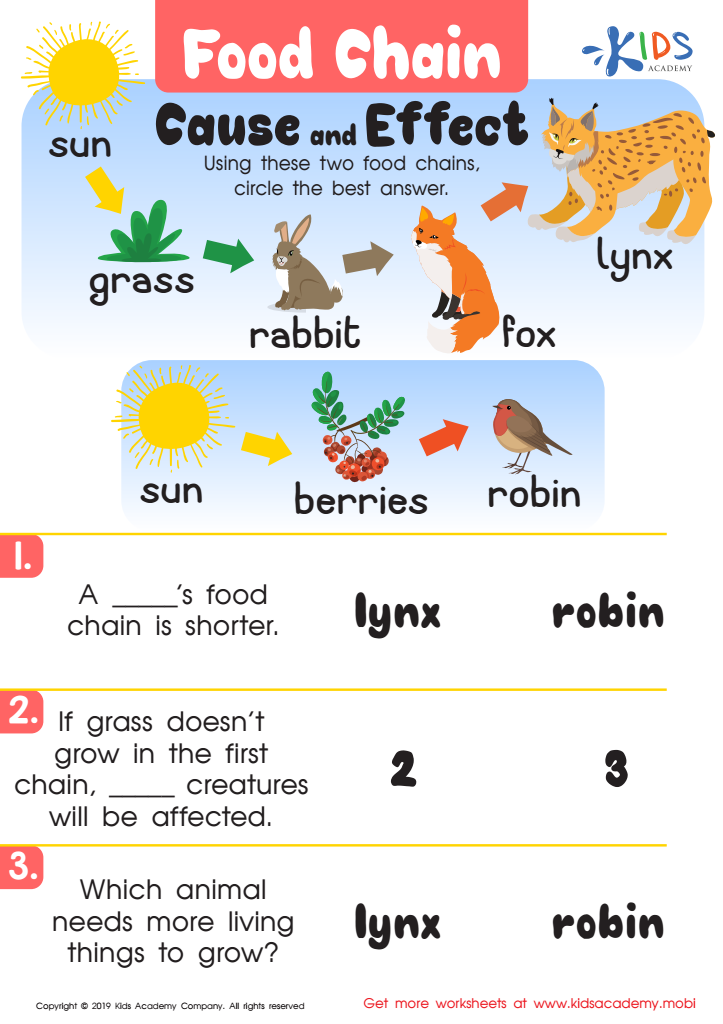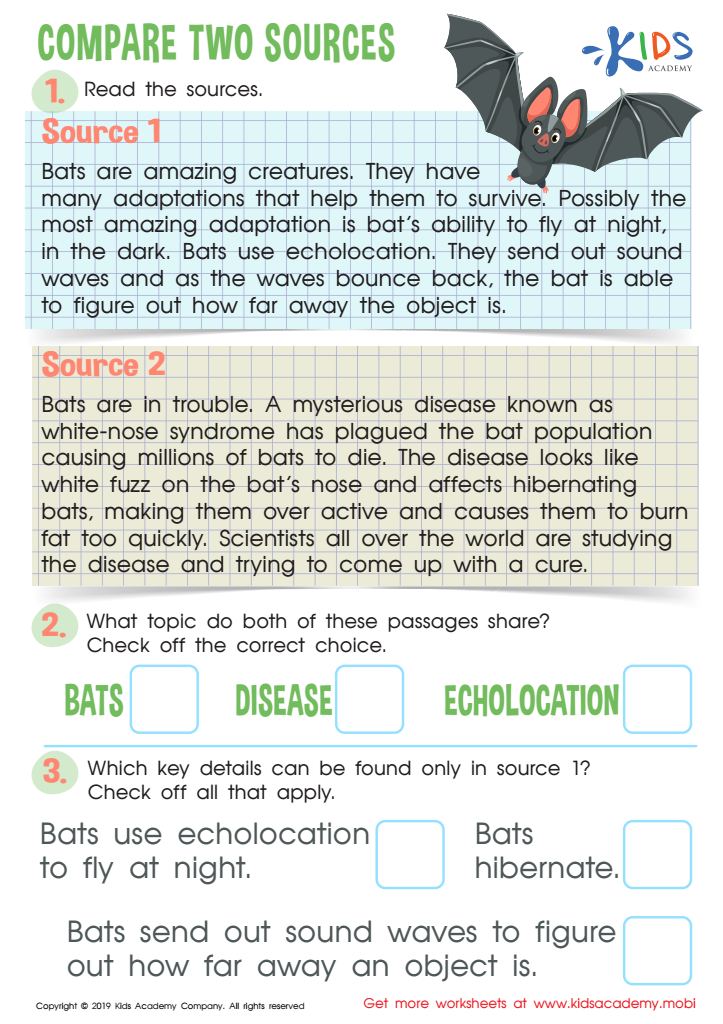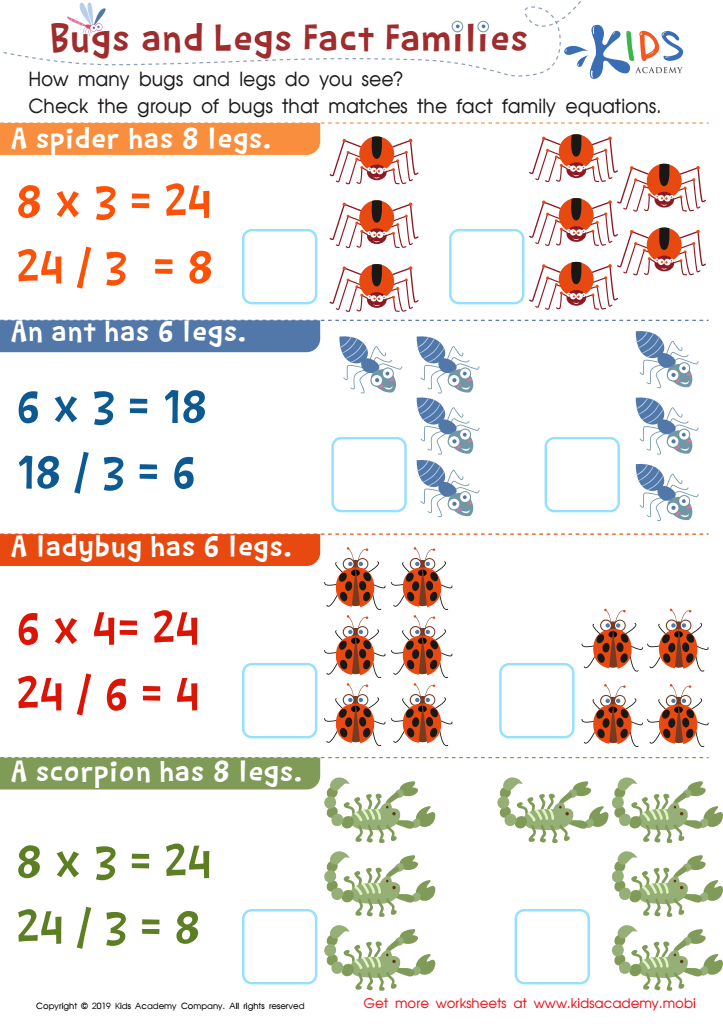Normal Plants and Animals Worksheets for Ages 5-9 - Page 5
100 filtered results
-
From - To


Match Them Up Worksheet


Food Chain Cause Worksheet


Compare Two Sources Worksheet


Bugs and Legs Fact Families Worksheet
Teaching children aged 5-9 about normal plants and animals is crucial for several reasons. Firstly, this knowledge fosters a sense of wonder and curiosity about the natural world. At this impressionable age, children are naturally curious; learning about flora and fauna can ignite a lifelong interest in the environment and science. Additionally, understanding plants and animals helps children develop empathy and respect for living things, laying the foundation for responsible environmental stewardship.
By learning about various species, children also enhance their observational skills. They start noticing patterns, differences, and similarities, which are critical thinking skills that extend beyond biology into other areas of learning. Moreover, such lessons can be intertwined with other subjects like reading, art, and math. Drawing a plant, writing a story from an animal's point of view, or counting leaves are all multidisciplinary activities that make learning more engaging.
Parents and teachers play an essential role in this foundational stage. Simple activities like gardening, visiting parks, or reading nature books together can make these lessons practical and fun. By emphasizing the importance of plants and animals, adults help children understand the interconnectedness of life, fostering a generation that values and protects our natural world.
 Assign to My Students
Assign to My Students














